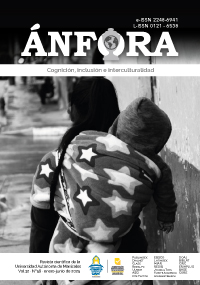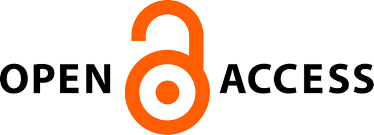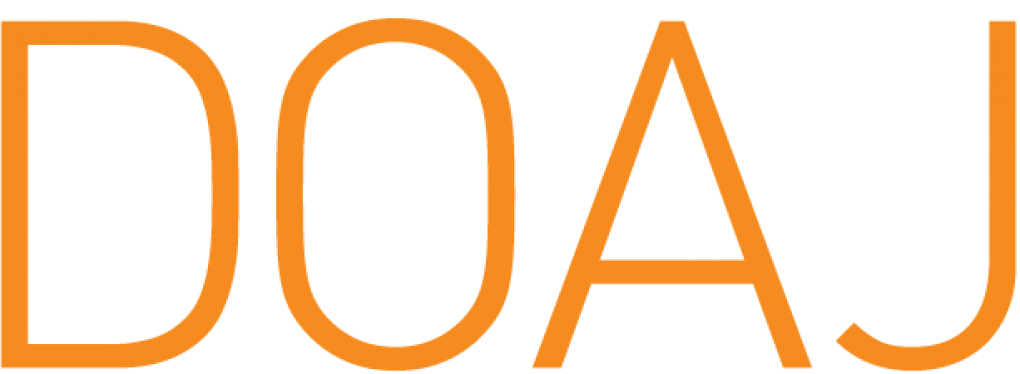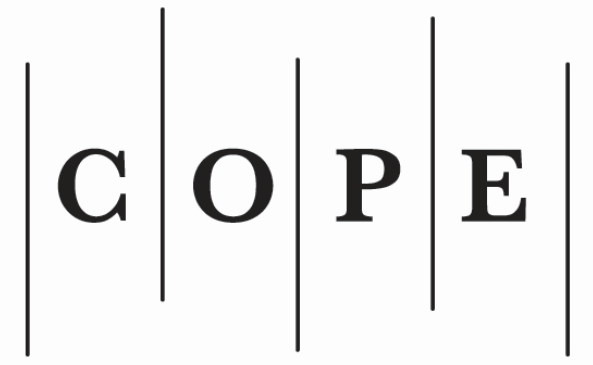El aprendizaje en adultos sordos La importancia de la comprensión de la cultura sorda en los métodos contemporáneos
Contenido principal del artículo
Resumen
Objetivo: el aprendizaje es un proceso constante en el ser humano. En este artículo se hace una reflexión sobre la relación entre los métodos que se han propuesto para el aprendizaje de los adultos sordos, y el respeto por su cultura en diversos países del mundo. Metodología: se revisaron textos científicos en los idiomas español e inglés de los últimos cinco años. En la búsqueda de información se localizaron 244 estudios, y 19 fueron seleccionados por su relevancia para el objetivo del estudio. Resultados: los resultados se agruparon por temas de interés respecto al aprendizaje de adultos sordos. Se encontraron cinco métodos neuronales, cuatro validados en población oyente probada en adultos sordos, cinco juegos serios, tres métodos que usan la tecnología, y dos de aprendizaje según las capacidades cognitivas de los participantes. Conclusiones: en los 19 escritos examinados se puede observar que en este proceso están interesados profesionales de todas las áreas de estudio; además de un creciente interés por el conocimiento de la cultura sorda. Es necesario enfatizar en la necesidad de continuar esta investigación, aplicando los resultados de los métodos en contextos sociales y/o laborales para mejorar la inclusión de la población.
Cómo citar
Descargas
Métricas
Detalles del artículo
método de aprendizaje, aprendizaje de adultos, minoría cultural, sordo, cultura
Chovaz, C. J., Rennison, V., & Chorostecki, D. O. (2021). The Validity of the Test of Memory Malingering (TOMM) with Deaf Individuals. The Clinical Neuropsychologist, 35(3), 597-614. https://doi.org/10.1080/13854046.2019.1696408
De Clerck, A. M. (2019). Creative Biographical Responses to Epistemological and Methodological Challenges in Generating a Deaf Life Story Telling Instrument. Contemporary Social Science, 14(3-4), 475-499. https://doi.org/10.1080/21582041.2018.1448940
Duncan, M. K., & Lederberg, A. R. (2018). Relations Between Teacher Talk Characteristics and Child Language in Spoken-Language Deaf and Hardof- Hearing Classrooms. Journal of Speech, Language, and Hearing Research, 61(12), 2977-2995. https://doi.org/10.1044/2018_JSLHR-L-17-0475
Economou, D., Gonzalez Russi, M., Doumanis, I., Mentzelopoulos, M., Bouki, V., & Ferguson, J. (2020). Using Serious Games for Learning British Sign Language Combining Video, Enhanced Interactivity, and VR Technology.
Journal of Universal Computer Science, 26(8), 996-1016. https://lib.jucs.org/article/24100/
Emmorey, K., & Lee, B. (2021). Teaching & Learning Guide for: The Neurocognitive Basis of Skilled Reading in Prelingually and Profoundly Deaf Adults. Language and Linguistics Compass, 15(4), 1-7. https://doi.org/10.1111/lnc3.12410
Friedner, M., & Kusters, A. (2020). Deaf Anthropology. Annual Review of Anthropology, 49(2), 31-47. https://doi.org/10.1146/annurev-anthro-010220-034545
Giustolisi, B., & Emmorey, K. (2018). Visual Statistical Learning With Stimuli Presented Sequentially Across Space and Time in Deaf and Hearing Adults. Cognitive Science, 42(8), 3177-3190. https://doi.org/10.1111/cogs.12691
Glezer, L. S., Weisberg, J., O’Grady Farnadya, C., McCullough, S., Midgley, K. J., Holcomb, P. J., & Emmorey, K. (2018). Orthographic and Phonological Selectivity Across the Reading System in Deaf Skilled Readers. Neuropsychologia, 117, 500-512. https://doi.org/10.1016/j.neuropsychologia.2018.07.010
Hall, W. C., Smith, S. R., Sutter, E. J., DeWindt, L. A., & Dye, T. D. (2018). Considering Parental Hearing Status as a Social Determinant of Deaf Population Health: Insights from Experiences of the "Dinner Table Syndrome". PLOS ONE, 13(9), 1-8. https://doi.org/10.1371/journal.pone.0202169
Hansen, E. G., Loew, R. C., Laitusis, C. C., Kushalnagar, P., Pagliaro, C. M., & Kurz, C. (2018). Usability of American Sign Language Videos for Presenting Mathematics Assessment Content. Journal of Deaf Studies and Deaf Education, 23(3), 284-294 https://academic.oup.com/jdsde/article/23/3/284/4969363
Hisham, B., & Hamouda, A. (2019). Supervised Learning Classifiers for Arabic Gestures Recognition Using Kinect V2. SN Applied Sciences, 1, 1-21. https://doi.org/10.1007/s42452-019-0771-2
Hisham, B., & Hamouda, A. (2021). Arabic Sign Language Recognition Using Ada-Boosting Based on a Leap Motion Controller. Int. j. inf. tecnol., 13, 1221–1234. https://doi.org/10.1007/s41870-020-00518-5
Hoffman, D., Wolsey, J.-L., Andrews, J., & Clark, D. (2017). Translanguaging Supports Reading with Deaf Adult Bilinguals: A Qualitative Approach. The Qualitative Report, 22(7), 1925-1944. https://doi.org/10.46743/21603715/2017.2760
Kanazawa, Y., Nakamura, K., Ishii, T., Aso, T., Yamazaki, H., & Omori, K. (2017). Phonological Memory in Sign Language Relies on the Visuomotor Neural System Outside the Left Hemisphere Language Network. PLoS ONE, 12(9), 1-15. https://doi.org/10.1371/journal.pone.0177599
Kandemir, H., & Kose, H. (2021). Development of Adaptive Human–Computer Interaction Games to Evaluate Attention. Robotica, 40(1), 56-76. https://doi.org/10.1017/S0263574721000370
Khairuddin, K. F., Miles, S., & McCracken, W. (2018). Deaf Learners’ Experiences in Malaysian Schools: Access, Equality and Communication. Social Inclusion, 6(2), 46-55. https://doi.org/10.17645/si.v6i2.1345
Kung, M. S., Lozano, A., Covas, V. J., Rivera-González, L., Hernández-Blanco, Y. Y., Diaz-Algorri, Y., & Chinapen, S. (2021). Assessing Medical Students’ Knowledge of the Deaf Culture and Community in Puerto Rico: A Descriptive Study. Journal of Medical Education and Curricular Development, 8, 1-5. https://doi.org/10.1177/2382120521992326
Kyle, J. y Woll, B. (1985). Sign Language: The Study of Deaf People d their Language. Cambridge.
Laurent, S., Boucheix, J.-M., Argon, S., Hidalgo-Muñoz, A. R., & Paire-Ficout, L. (2019). Can Animation Compensate for Temporal Processing Difficulties in Deaf People? Appl Cognit Psychol, 34(2), 308-317. https://doi.org/10.1002/acp.3617
Lawyer, G., de García, B. G., & Karnopp, L. B. (2018). Deaf Education and Deaf Culture: Lessons from Latin America. American Annals of the Deaf, 162(5), 486–488. https://doi.org/10.1353/aad.2018.0006
Malaia, E. A., Krebs, J., Roehm, D., & Wilbur, R. B. (2020). Age of Acquisition Effects Differ Across Linguistic Domains in Sign Language: EEG Evidence. Brain and Language 200, 1-10. https://doi.org/10.1016/j.bandl.2019.104708
O’Connell, N. P. (2014). ‘Confessing to Wilful Disobedience’: An Ethnographic Study of Deaf People’s Experience of Catholic Religious Schooling in the Republic of Ireland. British Journal of Religious Education, 33(3), 229-247.
https://doi.org/10.1080/03323315.2014.940683
Organización Mundial de la Salud [OMS]. (2 de marzo de 2021). La OMS advierte que, según las previsiones, una de cada cuatro personas presentará problemas auditivos en 2050. https://www.who.int/es/news/item/02-03-2021-who-
1-in-4-people-projected-to-have-hearing-problems-by-2050
Otoom, M., & Alzubaidi, M. A. (2018). Ambient Intelligence Framework for Real-Time Speech-to-Sign Translation. Assistive Technology, 30(3), 119-132. https://doi.org/10.1080/10400435.2016.1268218
Padden, C. (1980). The Deaf Community and the Culture of Deaf People. In C. Baker, & R. Pattison (Eds.) Sign Language and the Deaf Community (pp. 89-103). Silver Spring: National Association of the Deaf.
Paiva, H., Furlan, J. B., & Pinheiro, P. R. (2020). An Educational Game to teach Numbers in Brazilian Sign Language while having Fun. Computers in Human Behavior, 107, 1-51. https://doi.org/10.1016/j.chb.2018.12.003
Pappas, M. A., Demertzi, E., Papagerasimou, Y., Koukianakis, L., Kouremenos, D., Loukidis, I., & Drigas, A. S. (2018). E-Learning for Deaf Adults from a User-Centered Perspective. Education Sciences, 8(4), 1-15. https://doi.org/10.3390/educsci8040206
Pfister, A. E. (2017). Forbidden Signs: Deafness and Language Socialization in Mexico City. ETHOS, 45(1), 139–161. https://doi.org/10.1111/etho.12151
Que, M., Jiang, X., Yi, C., Gui, P., Jiang, Y., Zhou, Y.-D., & Wang, L. (2018). Language and Sensory Neural Plasticity in the Superior Temporal Cortex of the Deaf. Neural Plasticity, 2018, 1-18. https://doi.org/10.1155/2018/9456891
Retief, M. & Letšosa, R. (2018). ‘Models of disability: A brief overview’, HTS Teologiese Studies/ Theological Studies, 74(1), 1-8. https://doi.org/10.4102/hts.v74i1.4738
Rodrigues, F. M., Rato, J. R., Mineiro, A., & Holmström, I. (2022). Unveiling Teachers’ Beliefs on Visual Cognition and Learning Styles of Deaf and Hard of Hearing Students: A Portuguese-Swedish Study. PLoS ONE, 17(2), 1-20. https://doi.org/10.1371/journal.pone.0263216
Ruiz-Stovel, V. D., González-Garrido, A. A., Gómez-Velázquez, F. R., Alvarado-Rodríguez, F. J., & Gallardo-Moreno, G. B. (2021). Quantitative EEG Measures in Profoundly Deaf and Normal Hearing Individuals while Performing a Vibrotactile Temporal Discrimination Task. International Journal of Psychophysiology, 166, 71-82. https://doi.org/10.1016/j.ijpsycho.2021.05.007
Saifan, R. R., Dweik, W., & Abdel-Majeed, M. (2018). A Machine Learning Based Deaf Assistance Digital System. Comput Appl Eng Educ, 26(4), 1008-1019. https://doi.org/10.1002/cae.21952
Silva, N. M., Alves, J., Castro, A. B., & Varela, J. H. (2020). Music Education for the Deaf: Characteristics, Barriers and Successful Practices. Educação e Pesquisa, 46, 1-17. https://doi.org/10.1590/S1678-4634202046221995
Smith, M. M. (2019). Innovations for Supporting Communication: Opportunities and Challenges for People with Complex Communication Needs. Folia Phoniatrica et Logopaedica, 71(4), 156–167. https://doi.org/10.1159/000496729
Sorgini, F., Caliò, R., Chiara Carrozza, M., & Oddo, C. M. (2018). Haptic-Assistive Technologies for Audition and Vision Sensory Disabilities. Disability and Rehabilitation: Assistive Technology, 13(4), 394-421. https://doi.org/10.1080/17483107.2017.1385100
Suranata, K., Atmoko, A., Bolo Rangka, I., & Ifdil, I. (2017). Risks and Resilience of Students with Hearing Impairment in An Inclusive School at Bengkala, Bali, Indonesia. Special Education, 2(37), 165-214. https://doi.org/10.15388/SE.2017.4
Sze, F., Xiao Wei, M., & Lam, D. (2020). Development of the Hong Kong Sign Language Sentence Repetition Test. The Journal of Deaf Studies and Deaf Education, 25(3), 298–317. https://doi.org/10.1093/deafed/enaa001
Takala, M., & Sume, H. (2018). Hearing-Impaired Pupils in Mainstream Education in Finland: Teachers’ Experiences of Inclusion and Support. European Journal of Special Needs Education, 33(1), 134-147. https://doi.org/10.1080/08856257.2017.1306965
Tang, J., Cheng, H., Zhao, Y., & Guo, H. (2018). Structured Dynamic Time Warping for Continuous Hand Trajectory Gesture Recognition. Pattern Recognition, 80, 21-31. https://doi.org/10.1016/j.patcog.2018.02.011
Van de Weijer, J., Åkerlund, V., Johansson, V., & Sahlén, B. (2019). Writing Intervention in University Students with Normal Hearing and in Those with Hearing Impairment: Can Observational Learning Improve Argumentative
Text Writing? Logopedics Phoniatrics Vocology, 44(3), 115-123. https://doi.org/10.1080/14015439.2017.1418427
Vesel, J., & Robillard, T. (2017). Accessing Science Museum Exhibits with Interactive Signing Dictionaries. Journal of Visual Literacy, 36(3-4), 125-141. https://doi.org/10.1080/1051144X.2017.1397310
Weiss, E. (2003). La investigación educativa en México 1992-2002. Grupo Ideograma Editores.
Yusa, N., Kim, J., Koizumi, M., Sugiura, M., & Kawashima, R. (2017). Social Interaction Affects Neural Outcomes of Sign Language Learning As a Foreign Language in Adults. Frontiers in Human Neuroscience, 11, 1-11. https://doi.org/10.3389/fnhum.2017.00115

Esta obra está bajo una licencia internacional Creative Commons Atribución-NoComercial-CompartirIgual 4.0.
Una vez aprobado el manuscrito el/los autores deben firmar el contrato de cesión de derechos patrimoniales sobre el artículo.


 https://orcid.org/0000-0001-5305-1280
https://orcid.org/0000-0001-5305-1280










